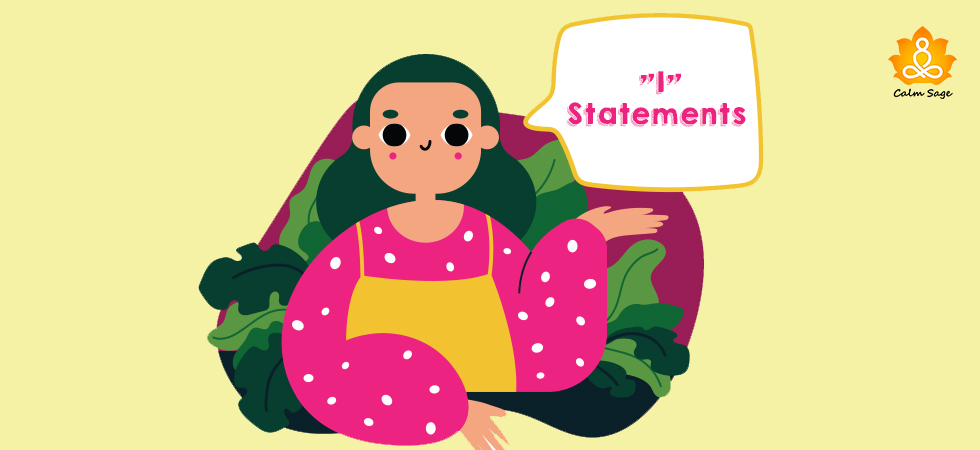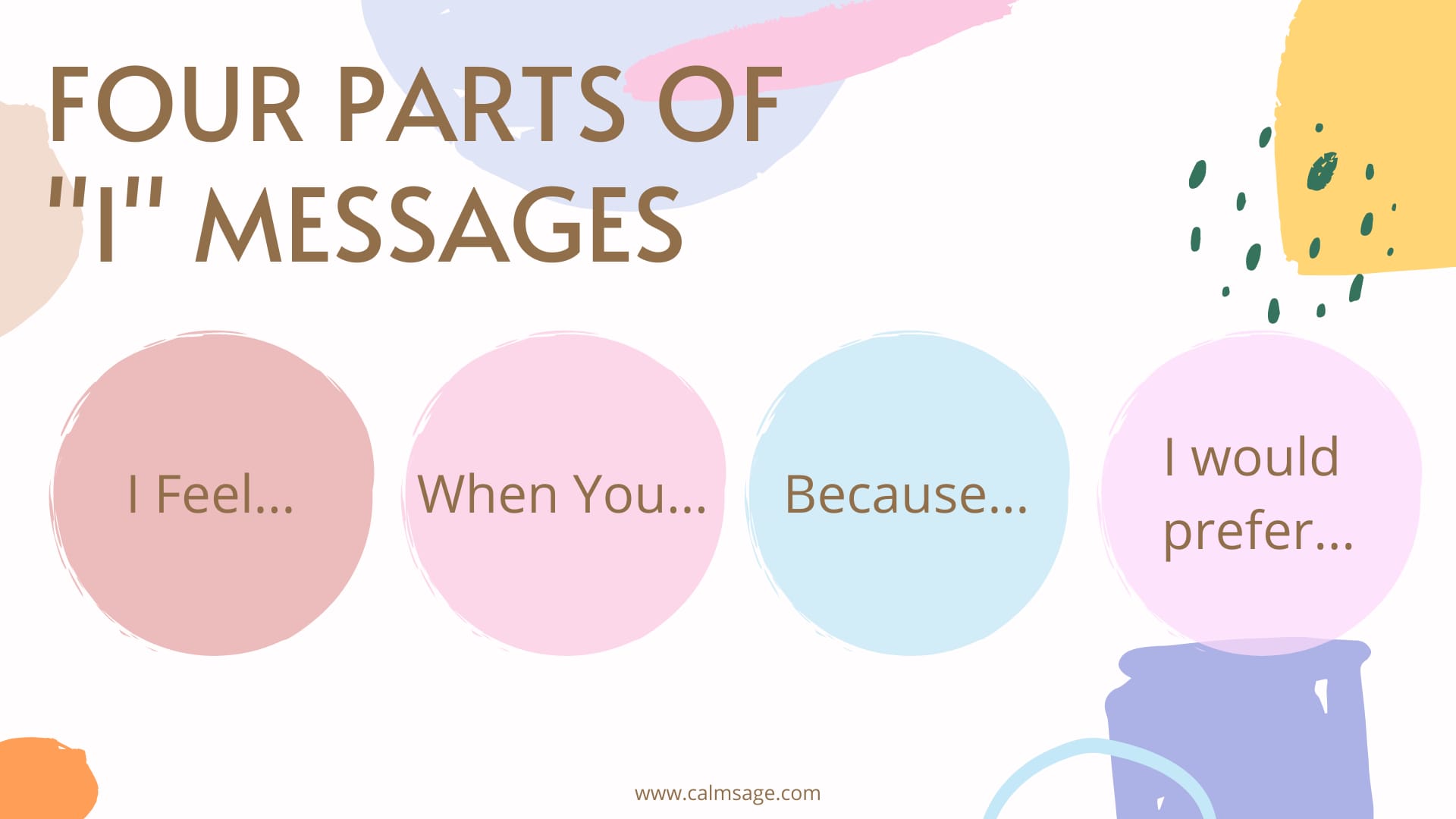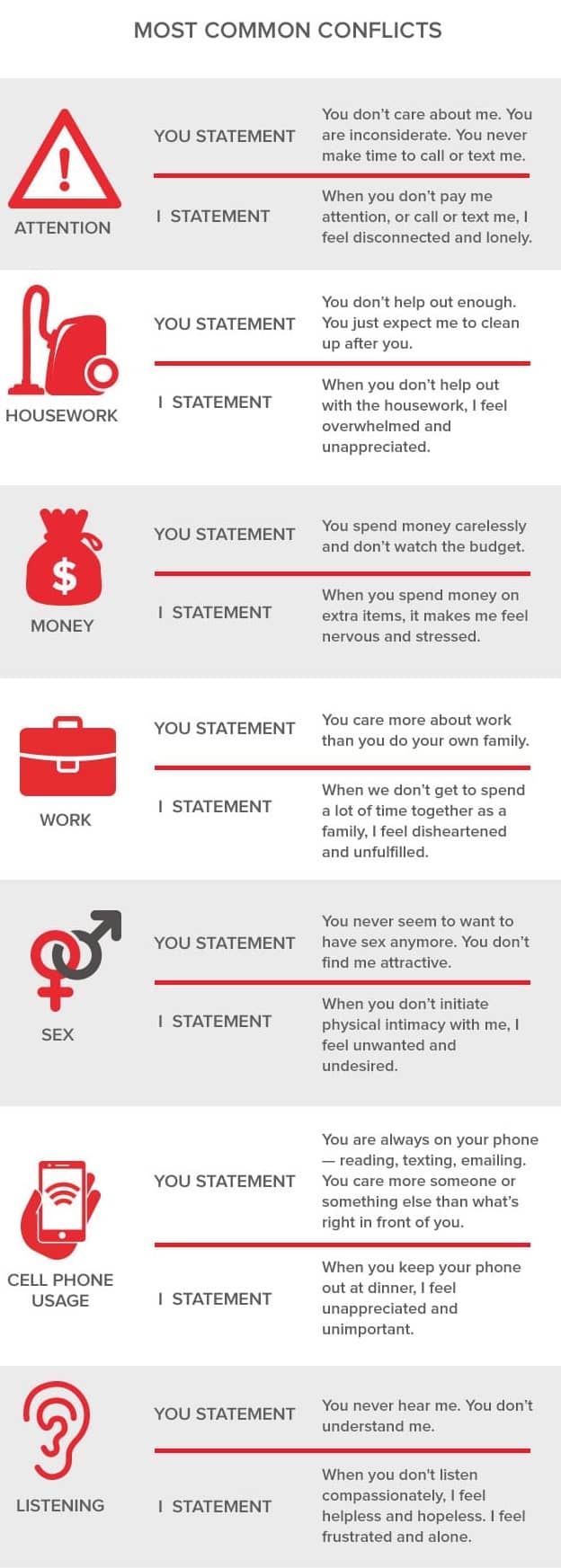The Power of “I” Statements (Your Magical Mental Health Tool)

“I” is a powerful word. Interestingly, the power of this word and “I” statements has seemingly increased with an inclination of people towards leading a mentally healthy life. “I” statements are now identified as a communication tool, a way to create boundaries, a skill to practice self-care, and more.
In fact, experts from different fields have now been focusing on the power of “I” statements and guiding people towards personal development by putting them to use. But what is it about an “I” message that works so miraculously well in safeguarding our mental health?
Well, let us find it out and see how we can put an “I” message to use.
Exploring The Power of “I” Statements
In the 1960s Thomas Gordon highlighted the concept of an “I” statement as a tool to replace “you” statements that usually put the blame and attribute the issue to the listener.
These statements allow you to take responsibility for how you are feeling and communicate it healthily when you are feeling sad, angry, or upset. This effective communication tool helps resolve the conflict, reduces blaming, and gives space to respond than to react.
If you ask me, “I” statements are a great tool to learn the art of being assertive. It closes the door of you getting defensive. So the fangs remain inside and you still manage to communicate exactly how you feel and what you want.
In fact, “I” statements are referred to as assertive statements as well. While on one end it helps you state your concerns on the other end it makes it easier for the listener to hear and understand you.
Benefits of “I” Statements
Mental health professionals have encouraged the use of “I” statements when communicating with others. It is found to be an effective tool in counseling, especially family, marriage, and couple counseling.
Some key ways in which an “I” message can be useful in your life are:
- An “I” message allows you to focus on your own feelings and experiences.
- It helps you reduce blaming, defensiveness, and accusations.
- “I” statements are a great tool to put across your concern without causing the listener to shut down.
- These statements help in resolving conflicts as you come up with more constructive dialogue.
- “I” message reflects how things feel from your side.
- While “you” statements provoke anger, defensiveness, and hostility, “I” statements replace it.
- Healthy relationships and boundaries are created by using the “I” message tool.
- It allows you to control and regulate your emotions healthily.
How to Make I Statements for YourSelf?
To use this tool in your daily life and improve not just your communication skills but also your mental well-being here are some pointers that you need to take care of. There are four parts of an “I” statement that you need to understand and imply in your life.
Four Parts of an “I” Message

Part 1: “I feel _________”
Here you express and state your feelings.
Part 2: “When you ______”
Express what you observed here.
Part 3: “Because _______”
In this part of the statement, you state your need.
Part 4: “I would prefer that ______”
Finally, state your preference and what you wish for from the other person.
Examples of “I” Messages
Now let us see how we can put these four parts together to use in our lives and resolve conflicts in different situations.
1. Workplace and “I” Message
Situation 1: Colleague telling you to cover a shift for them.
You Statement: “You always expect me to cover your shifts. I don’t want to.”
I Statement: “I feel piled up when you instead of asking just come and tell me to cover the shift for you because I am not also available. I would prefer if you ask me next time before suggesting my name.”
2. Relationships and “I” Message
Situation 2: You don’t feel heard in your relationship.
You Statement: “You don’t care about me or my feelings.”
I Statement: I feel unheard and frustrated when you are not available to hear my feelings because I feel unwanted then. I would prefer it if you can acknowledge my feelings.
3. Boundaries and “I” Message
Situation 3: When others ask you to revert immediately after dropping a message.
You Statement: “You have to understand that I am not always available to text you.”
I Statement: I feel overly burdened when you keep asking me to revert you immediately after seeing a message because sometimes I am not in a headspace to revert. If next time you could please give me my space and time to get back to you.
Apart from these examples, here is an infographic shared by Tony Robbins, that will help you identify “you” message and further guide you to switch it to the “I” message.

Special Section: What “I” Statements Are Not
There are many misconceptions around this tool of “I” message thus it is also important to know what your “I” statement is not.
- “I” statements are not about being polite, it is about being clear about what you need.
- “I” message is not a tool to set unrealistic expectations.
- It opens the door for communication by improving your relationships. It is not the resolution of all the problems.
- It does not magically fix the situation. You need to constantly work on the way you communicate for it to start reflecting changes in your life.
When do we Use I-Messages?
- When we need to confront others about their behavior .
- When we feel others are not treating us right.
- When we feel defensive or angry.
- When others are angry with us.
“I” Statements Worksheet
Changing our way of communication needs constant practice. So we advise you to keep a check on how you are expressing yourself and your needs to others. You can use this worksheet given below to switch from “You” statements to “I” statements. Make a note of the points mentioned above and you are all set to explore the power of the “I” message in your life.
Are you all set to replace your “You” statements with “I” statements? Remember, you don’t necessarily need to be in therapy to use these therapy-based interventions. They are life-enhancing techniques that can be applied in daily life communication to de-escalate conflicts and balming.
Replacing your “you” statements with “I” statements and shifting from blaming to taking responsibility for how you feel can help you long in your journey of leading a healthy life.
So now go, give it a shot now, and do share the changes that it brings to your life, in the comments section below.
P.S.: Changing the way you speak can change a lot in your life!
My shot at using the “I” statement for all the beautiful souls reading this blog right now:
“I feel happy when you leave a comment after reading my post. It will make my day if you do that today as well.”
Thank you for reading!





















Thank you very much for the concrete suggestions and examples in this article. I'm going to start TODAY. I'll take time to keep a brief diary on my progress. With gratitude, Brian
My huge thanks for this clear explanation of using I-statements. Having it in PDF's an awesome idea!